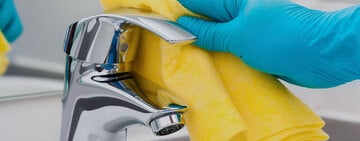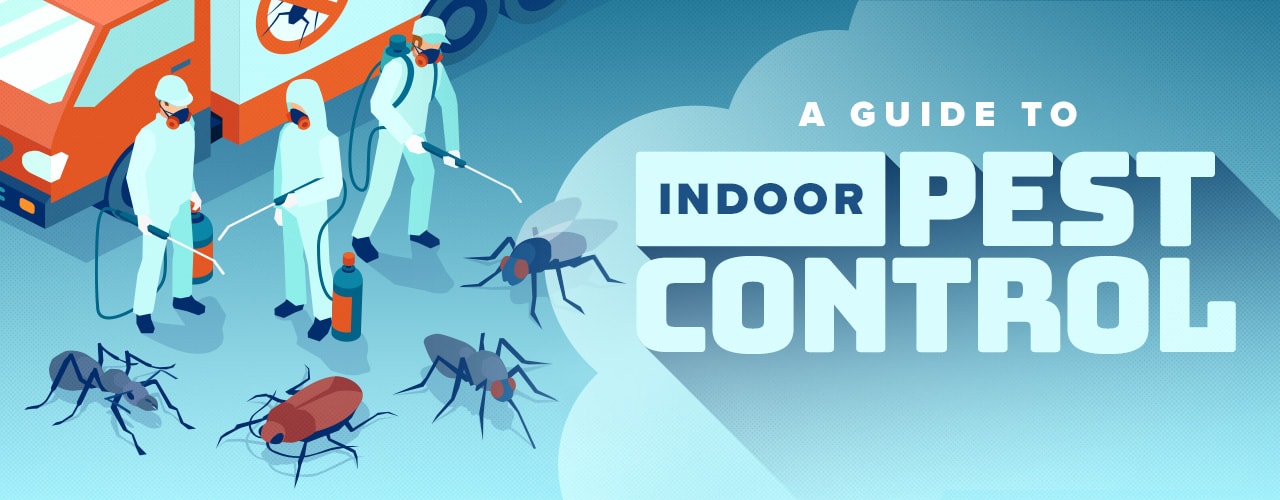
Pests present a major problem for restaurants and other businesses because a single pest sighting has the potential to ruin your establishment’s reputation. Not only are pests an unsightly visual, they often carry harmful diseases and bacteria. Although there are ways to deal with pest infestations, the ideal situation is to stop them before they occur. Thankfully, there is a handful of cleaning trends and preventative measures you can adopt to keep your business pest-free. Below we’ll cover several aspects of indoor pest control that can keep your customers and staff safe from pest infestations:
Shop All Pest Control ProductsRestaurant Pest Control
Pest control is vital to the success of any restaurant business, as failure to control pests can lead to a major loss of customers or even a complete shutdown of your business. Pest prevention can seem like an overwhelming task at first, especially when you consider all the ways pests can enter your restaurant. However, if you focus on cleanliness and sanitation in a handful of pest hot spots around the interior and exterior of your establishment, you should be able to stop pest infestations before they even begin.
Interior Pest Control
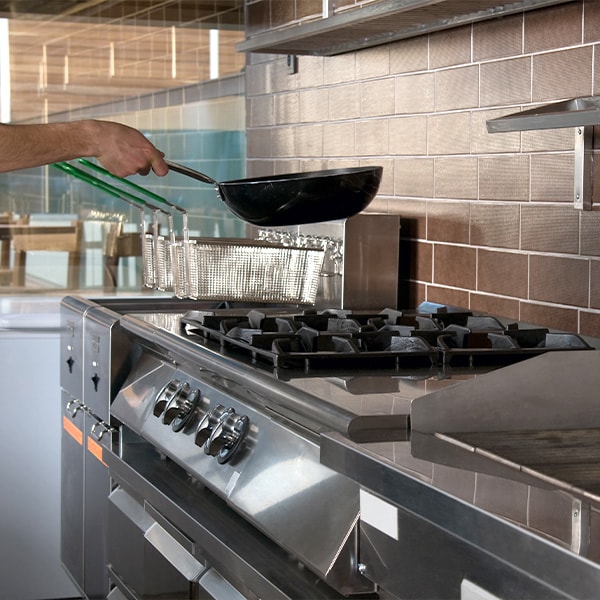
To deter pests from entering the interior of your establishment, you need to have regular cleaning and sanitizing throughout your business. Additionally, any major unexpected messes and spills need to be immediately addressed before they attract unwanted pests. Below, we’ve outlined a few interior locations that frequently attract pests and how you can prevent pests from appearing in these locations.
- Dining Areas - Seats and tables in dining areas should be wiped down promptly after guests are finished, getting rid of any crumbs and food waste. Areas beneath the table should be swept immediately after a party leaves as well, cleaning up any waste that may have fallen or spilled on the floor.
- Food Prep Areas - Equipment in your food prep areas should be cleaned and sanitized after use. Watch out for any crumbs, drips, or splashes that may have accumulated during the food prep process, as they can attract pests if not cleaned properly.
- Storage Areas - Dry food products should be kept in tightly-sealed food storage containers, preventing pests from accessing them. Food should be stored at least 6” off the ground and 12” away from walls, making it easy for staff to complete routine cleaning and inspection. Utilize the “First In First Out” inventory method to ensure that your food doesn’t remain in storage for long periods of time and attract pests.
- Trash Cans - To prevent pests from entering your waste areas, all trash cans in your establishment should have both liners and lids. These items make waste receptacles more sanitary and can prevent some pests from entering. Additionally, the trash cans themselves should be frequently washed and cleaned even after emptying, ensuring there is no remaining food or waste inside that could attract pests.
- Floor Drains - Floor drains are a breeding ground for pests like flies, so it's vital that you keep them clean. You should regularly check your floor drains to ensure that no loose debris like food is under the grate. Also, you can clean your floor grates with chemical cleaners, making them a much less attractive location for pests.
Exterior Pest Control
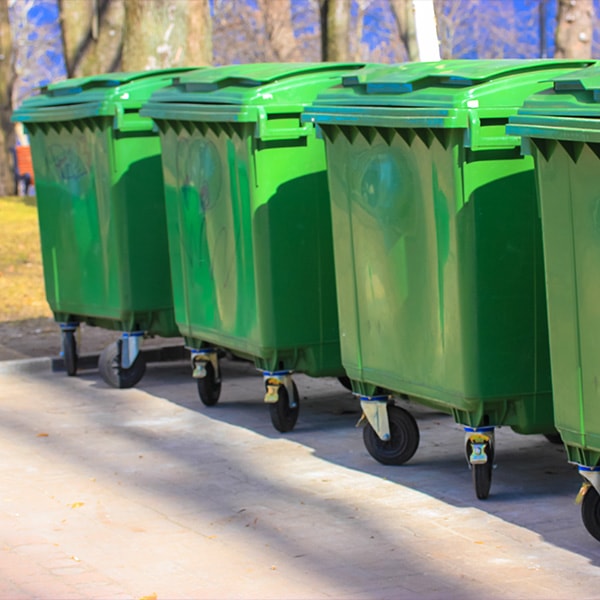
Although indoor pest control and outdoor pest control are handled differently, there is some overlap. Failure to properly maintain your establishment’s exterior can lead to pest infestations. These pests can then make their way indoors, creating several more pest problems. Below, we’ve outlined some outdoor problem areas that need to be addressed to keep your business pest free:
- Lighting - Many insects are attracted to light, causing them to cluster and swarm around light fixtures. Having an overwhelming amount of restaurant lighting directly around your business attracts pests like flies, creating potential problems. To offset this, use a minimal amount of lighting directly around your business, and instead install lighting fixtures a small distance away from your establishment.
- Waste Receptacles - Much like indoor waste receptacles, outdoor dumpsters have the potential to cause huge problems with pest control. To prevent pests from appearing around dumpsters, keep them closed at all times with tight-fitting lids. Dumpsters should also never overflow with waste and need to be frequently cleaned and sanitized. Keep dumpsters away from doors and entrances to your establishment, so even if they do attract pests, it won’t lead to an indoor infestation.
- Entrances and Exits - Entrances and exits are also a hotspot for pests, as they provide openings for outdoor pests to enter your establishment. To prevent unwanted pests from entering, doors and windows should be closed when possible. For further protection, you may want to use a door sweep to seal the gap between the bottom of your doors and the floor. In areas that are frequently opened for extended periods of time, investing in an air curtain is also a great way to keep flying pests away.
Most Common Pests
Equally as important as understanding pest control hot spots is understanding the most common pests you’ll likely encounter. Each type of pest poses a unique type of problem for your business. Although pests may vary depending on geography and business type, we've listed the most common pests you'll likely encounter:
Rodents
Rodents like mice and rats are some of the most well-known and common pests you’ll likely encounter. These pests signal that a location is unsanitary, meaning business will decrease if customers spot rodents in your establishment. Rodents aren’t just unpleasant to see, as they can also carry dangerous diseases such as salmonella, listeria, and E. Coli. Additionally, rodents can chew through food packaging and electrical wiring, causing a large amount of inventory and appliance damage. Check out our rodent control products to keep these pests under control.
Cockroaches
Cockroaches are another common type of pest that will likely trigger an immediate visceral reaction if seen by customers. These pests spread a variety of pathogens, putting your staff and customers in danger. Unfortunately, cockroaches are difficult to get rid of, as they can live weeks without food and water. In fact, some can even live without their head for weeks. To effectively combat a cockroach infestation, check out our crawling insect control products.
Flies
Customers may not be as appalled at seeing flies in your establishment as they would be if they saw rodents or cockroaches, but that doesn’t make flies any less dangerous to your business. Flies carry hundreds of diseases with them and easily contaminate foods by just landing on them. Since flies are so mobile, they can quickly spread pathogens all around your business. These pests are especially attracted to liquid sugary foods, so be sure to clean up spills immediately. Additionally, our flying insect control products can help keep your business free from flying pests.
Stored Product Pests
Stored product pests are a classification of pests that enter your business through packaged products like flour, grain, and nuts. Some examples of these types of pests include weevils, moths, beetles, and mites. Since these pests remain in stored products, they can be hard to discover. However, if they go unnoticed the bacteria these pests create can diminish the quality of your stored product, and may even lead to allergic reactions from customers. To combat stored product pests, you should inspect all incoming products to ensure no pests have stowed away. Additionally, existing inventory should be routinely checked for webbing, larvae, and other signs of infestation.
Back to TopHotel Pest Control

Indoor pest control in the hospitality industry shares some similarities with restaurant pest control, but also presents its unique challenges. Just like in restaurants, your business needs to be kept clean and problem areas addressed. However, additional methods need to be taken in hotel rooms and other lodgings, combating unique pests like bed bugs.
Bed Bug Control
Bed bugs are a major concern in the hospitality industry. Not only are these pests hard to detect, but they also require unique control methods to be dealt with. Although bed bugs may not spread disease as other pests do, they can still cause serious allergic reactions. Additionally, bed bugs are a ghastly sight for any guest in the hospitality industry, as it signals to the customer that the area is unsanitary and not properly taken care of.
To prevent bed bugs, routine cleaning needs to be completed after every guest checks out. Staff should also be educated on the signs of bed bug infestation, making it easier for infestations to be identified. While completing tasks such as turndown service, staff should remain vigilant and be on the lookout for signs of bed bugs at all times.
How Much Is Bed Bug Pest Control?
Bed bugs are small, which usually makes them difficult to detect unless there is a large number of them. Unfortunately, by the time bed bugs become noticeable they have already spread in large numbers and are costly to get rid of. Extermination efforts usually cost around $200 to $400 per room, so if you have a large infestation in multiple areas it can be quite costly. These prices also don’t factor in the potential loss of income that comes from the reputational damage caused by infestations.
How to Control a Bed Bug Infestation
Some chemical products are specifically manufactured to combat bed bugs and can be used to fight infestations. You can also utilize special mattress and box spring encasements to trap existing bed bugs and keep new ones out. If you have a particularly bad bed bug infestation, you should immediately contact an exterminator to eliminate your pest problem.
When to Call an Exterminator
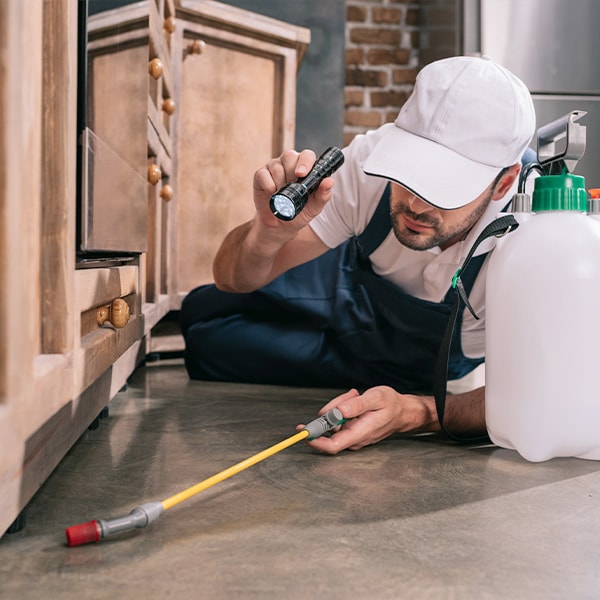
As soon as you start seeing signs of a pest infestation, you should get in contact with an exterminator. If signs of infestation are already visible to the naked eye, chances are it’s already a bad infestation. The longer you wait, the worse your pest infestation will become. You should also be wary of trying any DIY pest control methods, as items like traps and poisons can be extremely risky without the proper knowledge and research.
When to Call an Exterminator for Mice
If you see signs of mice infestation in your business, you should call an exterminator immediately. There are many signs that might signal a mouse infestation, so it’s important to be on the lookout. Below, we’ve listed some of the most common clues that could alert you to a mouse infestation:
- Seeing multiple mice over a short period of time.
- Spotting a mouse nest.
- Smelling strange odors such as mouse urine and feces.
- Noticing gnaw marks on bags of food and other packaging.
When to Call An Exterminator for Roaches
Roaches are extremely dangerous to the health of customers, so as soon as you see any signs of a roach infestation an exterminator needs to be called. Remaining vigilant and noticing the signs of a roach infestation is key to keeping customers safe. If you spot any of these signs, there is likely a roach infestation, and an exterminator should be called immediately.
- Spotting a roach. When there is one there are most likely several more.
- Finding shed skins. Roaches can shed their skin several times before reaching adulthood.
- Smelling foul odors. Roaches are known to emit a foul musty odor that is quite noticeable, especially in large numbers.
When to Call An Exterminator for Ants
Ants are crawling pests like cockroaches, but they don’t carry quite the same danger. If planned carefully, some ant problems can be handled in-house. However, there are a few situations where an ant infestation requires an exterminator’s help. If any of the following occurs, you should call an exterminator as soon as possible:
- If multiple infestations occur or DIY pest control repeatedly fails.
- If the ant infestation contains a dangerous variety of ants like fire ants.
- If the ant infestation poses a threat to your building's structural integrity. Much like termites, some types of ants like carpenter ants can borrow through wood and harm the structure of your building.
No matter what type of business you operate, indoor pest control is a vital part of your business. For restaurants, the food you serve customers needs to be kept safe from the dangerous pathogens pests carry. In all businesses, indoor pest sightings can permanently ruin your establishment’s reputation and may even result in permanent closure. To keep your customers and staff safe, follow standard pest control and sanitation procedures in your establishment. Doing so can you save you from major problems in the future.





